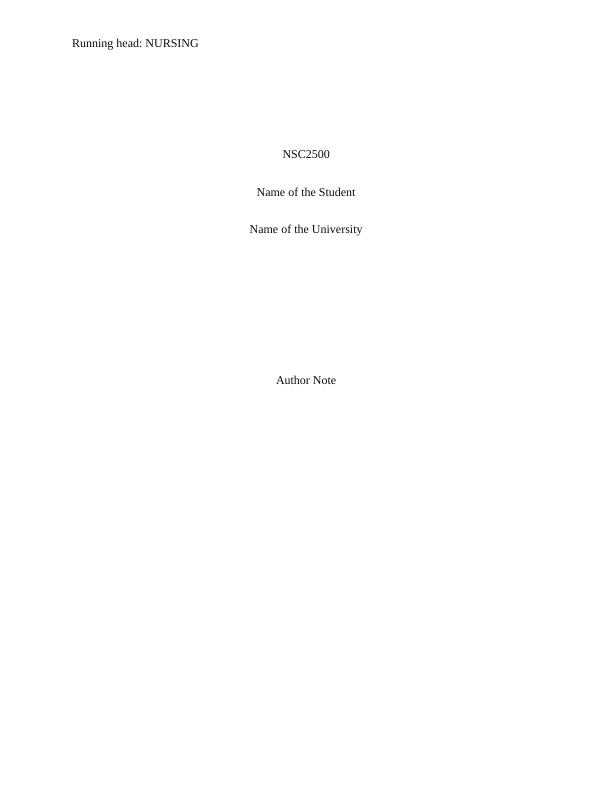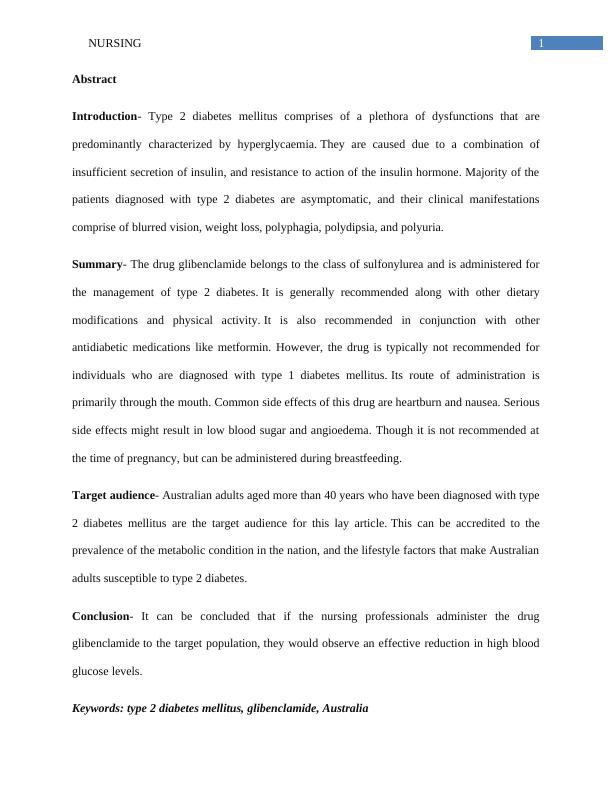NURSING NSC2500 Assignment: The Drug Glibenclamide
Produce an informative article that describes the pathophysiology of a specific disease or condition, as well as present the pharmacology used to address this.
13 Pages2851 Words16 Views
Added on 2022-09-18
NURSING NSC2500 Assignment: The Drug Glibenclamide
Produce an informative article that describes the pathophysiology of a specific disease or condition, as well as present the pharmacology used to address this.
Added on 2022-09-18
ShareRelated Documents
End of preview
Want to access all the pages? Upload your documents or become a member.
Impact of Diabetes Mellitus on Society and Individuals
|10
|2942
|215
Homeostasis (article) | Human Body Systems
|7
|972
|441
Diabetes Mellitus: Definition, Types, Diagnosis, Management, Pathophysiology, Complications
|8
|1644
|361
Endocrine System: Type 2 Diabetes Mellitus and Hypoglycaemia
|6
|1493
|38
Acute Coronary Syndrome: A Case Study of Thomas with Multiple Health Complications
|11
|2781
|459
Diabetes Mellitus And Sulphonylurea
|16
|2758
|18




